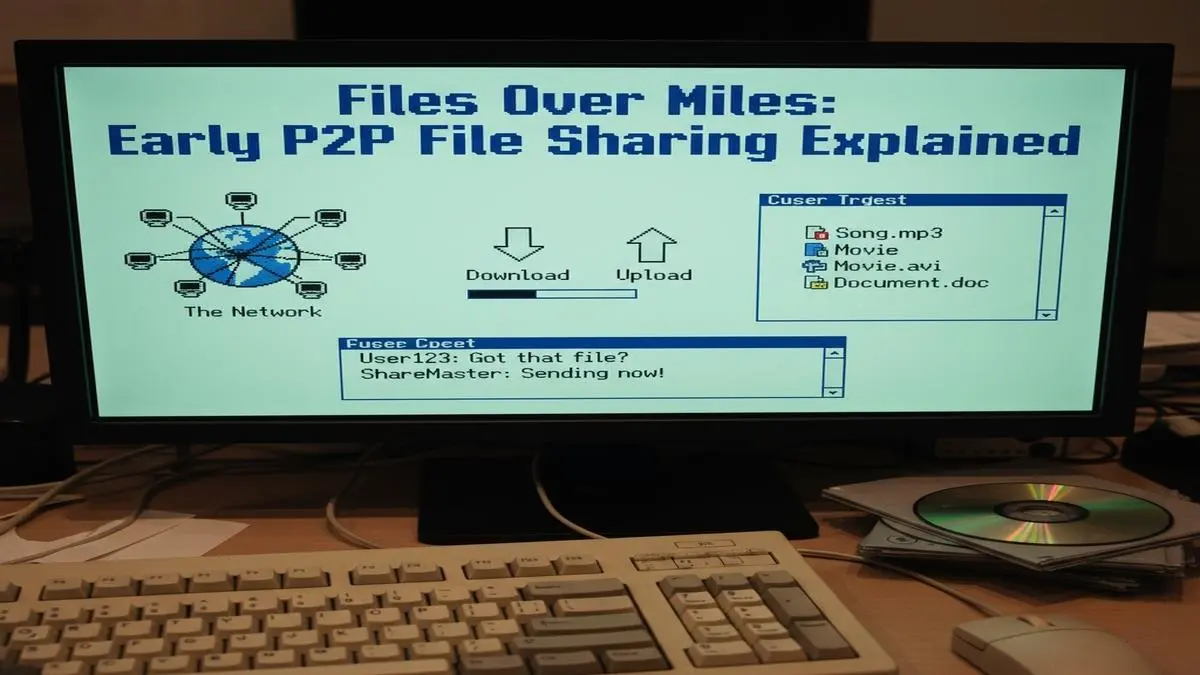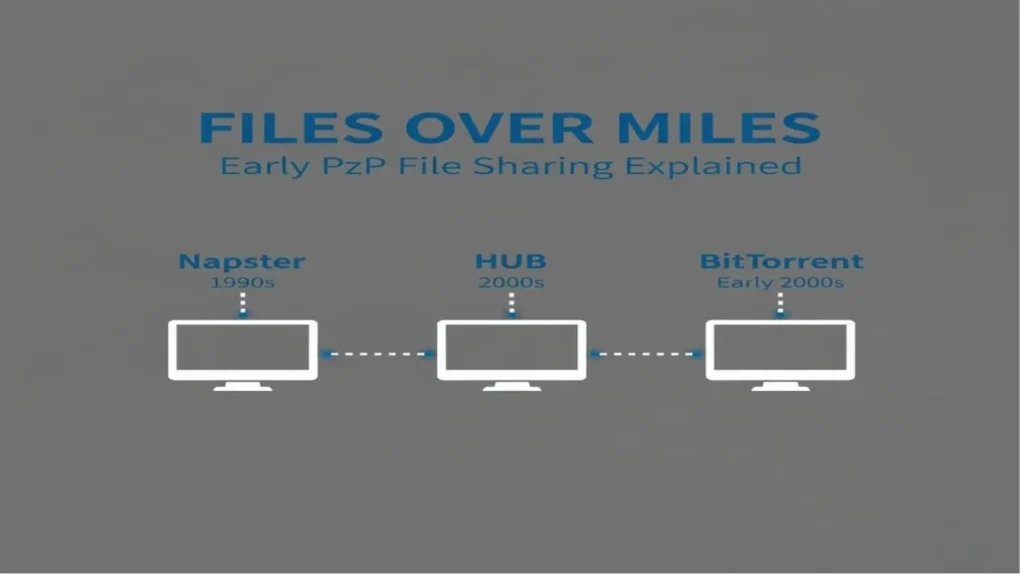TECH
Files Over Miles: Early P2P File Sharing Explained

In the late 2000s, when online file sharing was dominated by email attachments, cloud storage platforms, and peer-to-peer software clients, a unique tool called Files Over Miles briefly emerged as a groundbreaking alternative. Unlike traditional methods that required uploading files to a central server, this free web-based service enabled direct file transfers between users through their web browsers. By leveraging peer-to-peer (P2P) technology, it introduced a serverless way of moving data across the internet.
Table of Contents
What Was Files Over Miles?
Files Over Miles was designed with simplicity in mind. Unlike traditional file-sharing services, which required uploading data to a central server before making it available for others to download, this platform operated on a direct peer-to-peer (P2P) model.
- A user selected a file to share, with a maximum size limit of 2 GB.
- The service generated a unique link that could be sent to the recipient.
By bypassing central servers, Files Over Miles allowed faster transfers in some cases and gave users greater confidence that their files were not stored by third parties.
How Files Over Miles Worked
Files Over Miles utilized peer-to-peer file transfer over a browser interface. Instead of routing files through intermediary servers, it relied on a direct connection between the sender and the recipient.
- Direct Streaming: Files were transmitted directly from one browser to another in real time. This meant the file didn’t need to exist on a server at any point, reducing potential storage and bandwidth costs.
- Temporary Links: The unique URLs generated were only valid while the sender’s browser remained active, ensuring that files weren’t stored permanently online.
- Browser Dependency: Because the service ran entirely through the browser, no additional software installation was required.
Why Files Over Miles Stood Out
During its brief lifespan, Files Over Miles gained attention for several reasons:
- Ease of Use: No registration, login, or software installation was required. A single browser was enough.
- Security Advantage: By avoiding third-party storage, the tool reduced the risk of files being intercepted or stored on insecure servers.
- Privacy-Oriented: Because the data is streamed directly between devices, it minimizes exposure compared to centralized services.
Popularity in the Late 2000s
Files Over Miles arrived at a time when cloud storage services like Dropbox, Google Drive, and OneDrive were still in their infancy. Many users were hesitant to upload personal or work files to unfamiliar third-party servers. By offering a direct transfer model, Files Over Miles gave users more control and peace of mind.
Its simplicity also appealed to students, freelancers, and small businesses who needed a fast, free, and hassle-free way to share project files without hitting email limits or setting up FTP servers.

Files Over Miles: Main Limitations
While it was innovative, it was not without its shortcomings:
Reliability Issues
Transfers were highly dependent on both users’ internet speeds and connection stability. A drop in connectivity often meant starting over.
Browser Dependency
Because transfers relied on open browser sessions, users could not multitask easily or close the window until the process was finished.
File Size Restriction
Although 2 GB was large for its time, professionals working with high-resolution video or large datasets often needed even more.
Legacy and Impact on File Sharing
While Files Over Miles is no longer active, its influence can still be seen in the trajectory of file-sharing technology. It highlighted the potential for serverless, browser-based applications and foreshadowed later advancements in web-based peer-to-peer technologies.
- Encouraging Innovation: It inspired other developers to explore P2P sharing within browsers, paving the way for projects that leveraged technologies like WebRTC for real-time peer connections.
- Raising Awareness of Privacy: By avoiding central servers, it prompted discussions about whether serverless solutions could offer more privacy in file transfers.
Lessons from Files Over Miles
From a modern perspective, Files Over Miles teaches us several lessons about digital innovation:
- Simplicity Attracts Users: Ease of use was central to its success. Services that remove barriers often gain rapid adoption.
- Technology Evolves Quickly: What seemed revolutionary in 2009 soon became outdated as cloud storage platforms matured.
- Serverless Applications Have Value: While the service didn’t last, it showed that P2P browser applications were possible, a concept still relevant today.
FAQs
Q: Was Files Over Miles safe to use?
It offered privacy benefits since files were not stored on third-party servers. However, it lacked modern encryption standards, making it less secure than today’s services.
Q: Could you transfer any file type?
Yes, as long as the file size did not exceed 2 GB, users could transfer virtually any file type.
Q: Why do people still remember it?
Its simplicity, convenience, and novelty at the time made it a beloved tool for quick file transfers during the late 2000s.
Conclusion
Files Over Miles may no longer exist, but it played an important role in shaping the landscape of online file sharing. At a time when sending large files was a challenge, it provided a seamless, browser-based solution that many found invaluable. While its reliance on Flash and lack of encryption limited its future, the service demonstrated the potential of direct peer-to-peer file transfers over the web.
-

 FRIENDSHIP MESSAGES2 months ago
FRIENDSHIP MESSAGES2 months ago100+ Heart Touching Sorry Messages for Friends
-

 ANNIVERSARY WISHES6 months ago
ANNIVERSARY WISHES6 months ago100+ Beautiful Engagement Anniversary Wishes Messages and Quotes
-

 BIRTHDAY WISHES6 months ago
BIRTHDAY WISHES6 months ago300+ Happy Birthday Wishes for Brother | Heart Touching Happy Birthday Brother
-

 BIRTHDAY WISHES6 months ago
BIRTHDAY WISHES6 months ago200+ Unique Birthday Wishes for Your Best Friend to Impress on Their Big Day

































